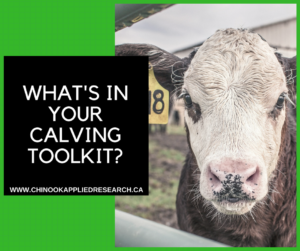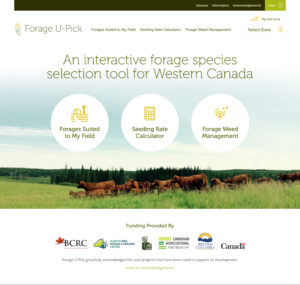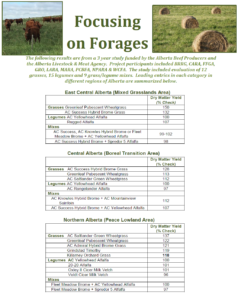
CURRENT FORAGE REPORTS
- Perennial Cereal Grain Crop Year End Report 2023
- Focusing on Forages Factsheet CARA
- FRG 19.15 FactSheet
- Focusing on Forages Factsheet 3
- Winter Cereal Drought Project Report
- Alternative and Annual Crop Mixes for Forage Production 2019 2022 Final
ARCHIVED FORAGE REPORTS
-
- CARA 2021 Forage & Demos Report
Available only to CARA members. Call the office to become a member & get your copy today!
2020 Forage & Demos Report
- 2019 Forage & Demos Report
- 2018 Forage & Demos Report
- 2017 Forage & Demos Report
- 2016 Forage & Demos Report
- 2015 Forage & Demos Report
- 2014 Forage & Demos Report
- 2013 Forage & Demos Report
MORE INFORMATION
- Alberta Beef Producers
- Canadian Cattlemen Association
- CanFax
- Canadian Cattle Identification Agency (CCIA)
Forages for hay and pasture are essential for beef production. Ensuring forage species are well-matched to growing conditions improves establishment rates, yield, vigour and quality. This can reduce costs, improve utilization and number of grazing days, and increase profitability. Using accurate production information can produce positive impacts on beef and forage productivity, sustainability, and competitiveness.
Forage U-Pick is a tool designed to provide users with information for forage selection, forage seeding rates, and weed management.
http://
Getting your Grazing Season Started on the Right Foot
Things to consider & developing your Grazing Plan FEATURING: Jim Gerrish & Colin Feilen
Focusing on Forages
The following results are from a 3 year study funded by the Alberta Beef Producers and the Alberta Livestock & Meat Agency. Project participants included BRRG, CARA, FFGA, GRO, LARA, MARA, PCBFA, NPARA & WCFA. The study included an evaluation of 12 grasses, 15 legumes and 9 grass/legume mixes. Leading entries in each category in different regions of Alberta are summarized below.
Focusing on Forages Summarized Fact Sheet
Focusing on Forages Fact Sheet
FINAL REPORT – Perennial Forage Variety Evaluation and Demonstration at Multiple Sites in Alberta
 What’s In Your Calving Toolkit?
What’s In Your Calving Toolkit?
Regardless of whether producers are ready for calving season or not. Being prepared is one the of best ways to ensure that the season goes smoothly.
Here are a few things every producer’s calving kit should contain:
Check Out the Calving Toolkit Checklist
[/one_half_last][divider style=”medium’]
Code of Practice for the Care and Handling of Beef Cattle
The Code of Practice for the Care and Handling of Beef Cattle provides recommendations for meeting the basic needs of beef cattle. The Code was developed to augment existing laws and regulations, reflecting industry’s commitment to the humane treatment and care of beef cattle.
The Code outlines acceptable science-informed recommendations and requirements on a variety of topics including housing, feeding, transport decision making and other management practices. The Code is intended to be used as an educational tool in the promotion of sound animal husbandry and care practices. The Code contains recommendations to help producers and others in the agriculture and food sectors compare and improve their own management practices.
The new Code of Practice for the Care and Handling of Beef Cattle was released in mid-2013, following an intensive National Farm Animal Care Council (NFACC) renewal process. The CCA is a member of NFACC, which brings together animal producer groups, governments, veterinarians, academics, the animal welfare movement, transporters and other stakeholders to, among other things, review and renew Codes of Practice. For more information, please visit the NFACC website.
McKinnon: The math behind animal nutrition lingo
When I visit with producers about their feeding program, I often get questions on “nutrition lingo.” Examples include questions on the meaning of a mineral or protein supplement tag or how much supplement do you need to feed to achieve an ionophore concentration of 22 or 33 ppm? Such confusion is understandable, particularly when you consider that many of us still think in imperial as opposed to metric, which unfortunately is the basis for the feed industry. With this column, I will try to translate some of the more difficult concepts.
First, remember that one pound (lb.) equals .454 kilogram (kg) and that one kg equals 2.205 lbs. As well, one ounce (oz.) = 28 grams and one gram is the same as 1,000 milligrams (mg). These conversions are important when we start to think about nutrient concentrations in different products. For example, on mineral and protein supplement tags you will often see protein or mineral concentrations listed as either a percentage or as milligrams per kilogram (mg/kg).

